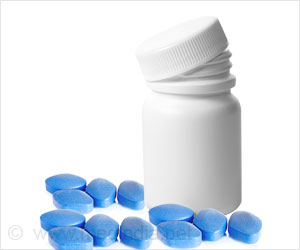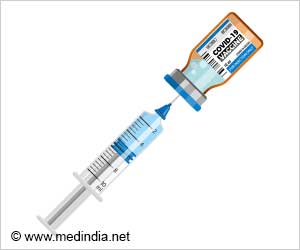COVID-19 patients were found to have higher levels of blood markers of neurological damage over the short term when compared to patients with Alzheimer’s disease.

‘COVID-19 patients were found to have higher levels of blood proteins (known to rise with neurological damage) over the short term when compared to non-COVID-19 patients diagnosed with Alzheimer’s disease.’





Led by researchers at NYU Grossman School of Medicine, the new study found higher levels of seven markers of brain damage (neurodegeneration) in COVID-19 patients with neurological symptoms than those without them, and much higher levels in patients that died in the hospital than in those discharged and sent home. A second analysis found that a subset of the damage markers in patients hospitalized with COVID-19, over the short term was significantly higher than in patients diagnosed with Alzheimer’s disease, and in one case more than twice as high.
“Our findings suggest that patients hospitalized for COVID-19, and especially in those experiencing neurological symptoms during their acute infection, may have levels of brain injury markers that are as high as, or higher than, those seen in patients with Alzheimer’s disease,” says lead author Jennifer A. Frontera, MD, professor in the department of neurology at NYU Langone Health.
Study Structure/Details
The current study identified 251 patients that, although 71 years of age on average, had no record of symptoms of cognitive decline or dementia before being hospitalized for COVID-19.
Advertisement
The research team also, where possible, compared markers levels in the COVID-19 group to patients in the NYU Alzheimer’s Disease Research Center (ADRC) Clinical Core cohort, an ongoing, long-term study at NYU Langone Health. None of these 161 control patients (54 cognitively normal, 54 with mild cognitive impairment, and 53 diagnosed with Alzheimer’s disease) had COVID-19.
Advertisement
Three of the study markers – ubiquitin carboxy-terminal hydrolase L1 (UCHL1), total tau, ptau181 – are known measures of the death or disabling of neurons, the cells that enable nerve pathways to carry messages. Levels of neurofilament light chain (NFL) increase with damage to axons, extensions of neurons.
Glial fibrillary acidic protein (GFAP) is a measure of damage to glial cells, which support neurons. Amyloid Beta 40 and 42 are proteins that are known to build up in patients with Alzheimer’s disease.
Past study results argue that total tau and phosphorylated-tau-181 (p-tau) are also specific measures of Alzheimer’s disease, but their role in the disease remains a matter of debate.
Blood markers in the COVID-19 patient group were measured in blood serum (the liquid part of blood that has been made to clot), while those in the Alzheimer’s study were measured in plasma (the liquid blood fraction that remains when clotting is prevented).
For technical reasons, the difference meant that NFL, GFAP, and UCHL1 levels could be compared between the COVID-19 group and patients in the Alzheimer’s study, but total tau, ptau181, Amyloid beta 40, and amyloid beta 42 could only be compared within the COVID-19 patient group (neuro symptoms or not; death or discharge).
Further, the main measure of neurological damage in COVID-19 patients was toxic metabolic encephalopathy, or TME, with symptoms from confusion to coma, and caused during severe infections by toxins generated as the immune system overreacts (sepsis), kidneys fail (uremia), and oxygen delivery is compromised (hypoxia).
Specifically, the average percentage increase in levels of the seven markers for hospitalized patients with TME compared to those without neurological symptoms was 60.5 percent.
For the same markers within the COVID-19 group, the average percentage increase when comparing those successfully discharged home from the hospital to those who died in the hospital was 124 percent.
A secondary set of findings came from comparing NFL, GFAP, and UCHL1 levels in the serum of COVID-19 patients against levels of the same markers in the plasma of non-COVID Alzheimer’s patients. NFL was over the short term 179 percent higher (73.2 vs. 26.2 pg/ml) in COVID-19 patients than in Alzheimer’s patients. GFAP was 65 percent higher (443.5 vs. 275.1 pg/ml) in COVID-19 patients than in the Alzheimer’s patients, while UCHL1 was 13 percent higher (43 vs. 38.1 pg/ml).
“Traumatic brain injury, which is also associated with increases in these biomarkers, does not mean that a patient will develop Alzheimer’s or related dementia later on, but does increase the risk of it,” says senior author Thomas M. Wisniewski, MD, the Gerald J. and Dorothy R. Friedman Professor in the department of neurology and director of the Center for Cognitive Neurology at NYU Langone. “Whether that kind of relationship exists in those who survive severe COVID-19 is a question we urgently need to answer with on-going monitoring of these patients.”
Source-Eurekalert














